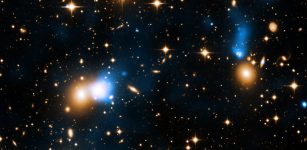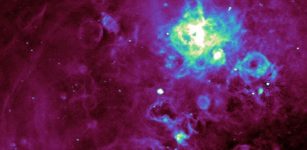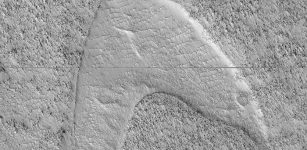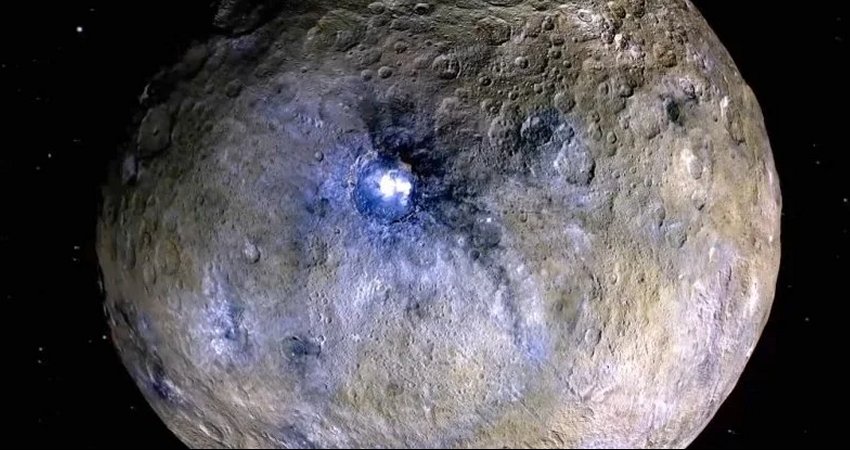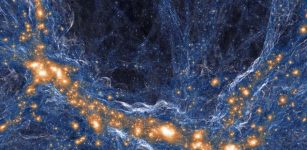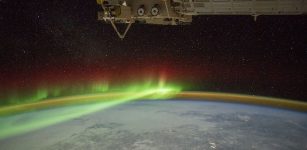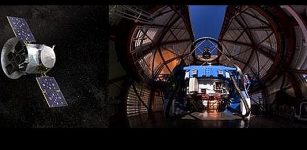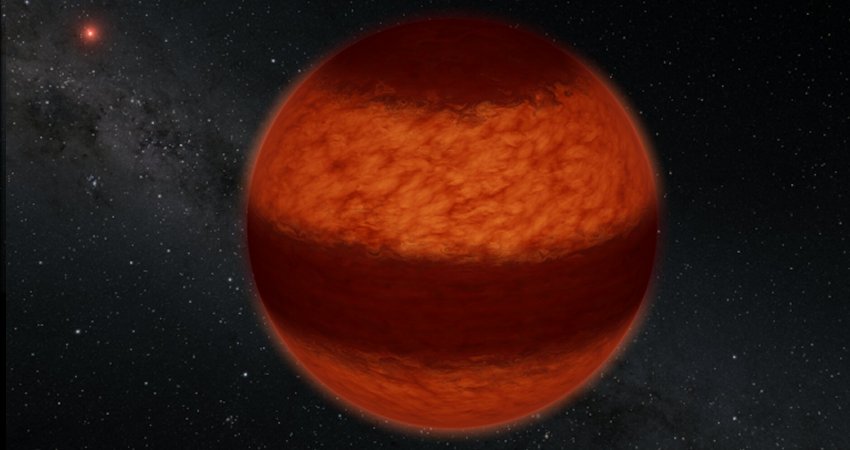Building Blocks Of Life Can Form Long Before Stars
Eddie Gonzales Jr. – MessageToEagle.com – An international team of scientists suggests that glycine, the simplest amino acid and an important building block of life, form in dense interstellar clouds well before they transform into new stars and planets.
Comets are the most pristine material in our Solar System and reflect the molecular composition present at the time our Sun and planets were just about to form.
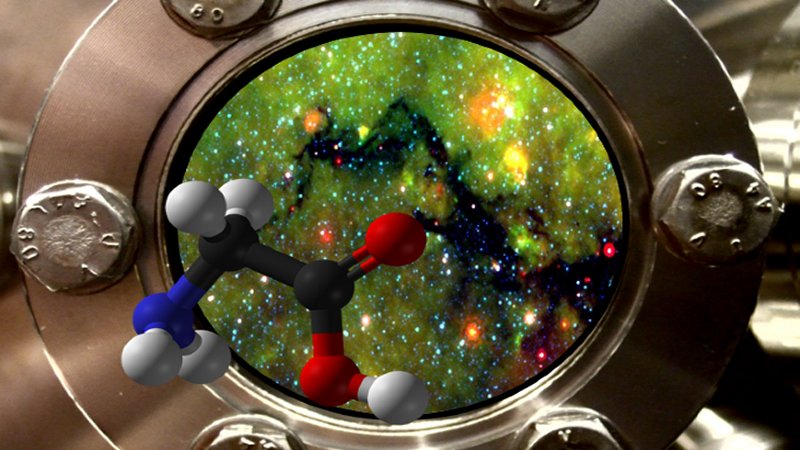 A view port of an experimental setup, showing a region in space with prestellar cores. The molecule that looks as if it is just getting out of the setup is Glycine. Credit: Professor Harold Linnartz.
A view port of an experimental setup, showing a region in space with prestellar cores. The molecule that looks as if it is just getting out of the setup is Glycine. Credit: Professor Harold Linnartz.
The detection of glycine in the coma of comet 67P/Churyumov-Gerasimenko and in samples returned to Earth from the Stardust mission suggests that amino acids, such as glycine, form long before stars.
Now, astrophysicists and astrochemical modelers, mostly based at the Laboratory for Astrophysics at Leiden Observatory, the Netherlands, have shown that it is possible for glycine to form on the surface of icy dust grains, in the absence of energy, through ‘dark chemistry’.
“Dark chemistry refers to chemistry without the need of energetic radiation. In the laboratory we were able to simulate the conditions in dark interstellar clouds where cold dust particles are covered by thin layers of ice and subsequently processed by impacting atoms causing precursor species to fragment and reactive intermediates to recombine,” Dr. Sergio Ioppolo, from Queen Mary University of London and lead author of the article, said.
At first, the scientists first showed methylamine, the precursor species of glycine that was detected in the coma of the comet 67P, could form. Then, they were able to confirm glycine could also be formed, and that the presence of water ice was essential in this process.
“From this, we find that low but substantial amounts of glycine can be formed in space with time,” said Professor Herma Cuppen from Radboud University, Nijmegen, who was responsible for some of the modeling studies within the paper.
“The important conclusion from this work is that molecules that are considered building blocks of life already form at a stage that is well before the start of star and planet formation,” said Harold Linnartz, Director of the Laboratory for Astrophysics at Leiden Observatory.
“Such an early formation of glycine in the evolution of star-forming regions implies that this amino acid can be formed more ubiquitously in space and is preserved in the bulk of ice before inclusion in comets and planetesimals that make up the material from which ultimately planets are made.”
“Once formed, glycine can also become a precursor to other complex organic molecules,” concluded Dr. Ioppolo.
“Following the same mechanism, in principle, other functional groups can be added to the glycine backbone, resulting in the formation of other amino acids, such as alanine and serine in dark clouds in space. In the end, this enriched organic molecular inventory is included in celestial bodies, like comets, and delivered to young planets, as happened to our Earth and many other planets.”
The findings contradict previous studies that have suggested UV radiation was required to produce this molecule.
Written by Eddie Gonzales Jr. – MessageToEagle.com Staff

